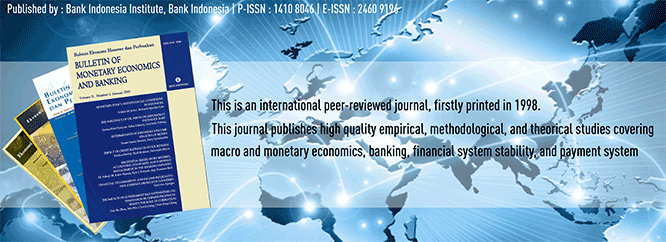
Document Type
Article
Abstract
Financial inclusion is one of strategy to increase inclusive growth in Asian countries. However, it may cause either stability or instability in the financial system. Therefore, this research aimed to analyze the relationship between financial inclusion and financial stability and to analyze factors that affect the stability of the financial system in seven Asian countries in the periode of 2007-2011. The methods used are Pearson correlation and Fixed Effect Model. The results show that there is negative correlation at 5% significant level between financial inclusion and financial stability. Factors that significantly affect the financial stability are financial inclusion, financial stability in the previous period, non-FDI capital flows to GDP, the ratio of current assets to deposits and Short-term funding, and GDP per capita. Thus the increase in financial inclusion, current assets of banking, GDP per capita, and the portfolio investment can become the strategies to improve the financial stability (Bank z score) on the determined and future year.
Recommended Citation
Dienillah, Azka Azifah and Anggraeni, Lukytawati
(2016)
"DAMPAK INKLUSI KEUANGAN TERHADAP STABILITAS SISTEM KEUANGAN DI ASIA,"
Bulletin of Monetary Economics and Banking: Vol. 18:
No.
4, Article 3.
DOI: https://doi.org/10.21098/bemp.v18i4.574
Available at:
https://bulletin.bmeb-bi.org/bmeb/vol18/iss4/3
First Page
409
Last Page
430
Creative Commons License

This work is licensed under a Creative Commons Attribution-NonCommercial 4.0 International License
Country
Indonesia
Affiliation
Bogor Agricultural University







